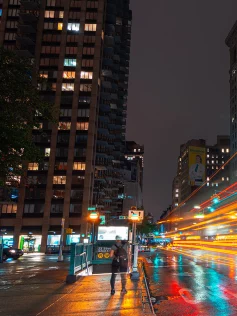AIで競争優位性を構築するには、価値を創出できるよう意思決定とオペレーションを再編成し、人間の組織能力に投資して浸透させる必要があります。どうしたらAIを組織に拡大展開できるかを考えるうえでBCGのAIに関する最近の論考などがお役に立てば幸いです。
Welcome to BCG
Unlocking the Potential of Those Who Advance the World

BCGの書籍『BCGプライシング戦略 価格でビジネス・市場・社会を進化させる』は、プライシングの意思決定について新たな視点を提示します。

Article
2025年10月1日
Article
2025年10月1日
世界中で進む高齢化は、日本をはじめとする各国に人口構造上の深刻な課題を突きつけています。しかし適切な施策を講じれば、経済成長とウェルビーイングの両立を実現することは可能です。

Article
2025年8月31日
Article
2025年8月31日
2024年、グローバル銀行業界の業績には回復が見られましたが、収益構造の脆弱性や非銀行プレーヤーの台頭などの課題が顕在化しています。本稿では、全社的なデジタル化・AI活用を含む、持続的成長に向けたアプローチを探ります。

Slideshow
2025年8月4日
Article
2025年8月4日
BCGが世界11の国・地域を対象に実施した調査によると、AIツールを日常的に使用する一般従業員の割合は半数にとどまっています。活用を促すために、何をすべきでしょうか。

Article
2025年6月5日
Article
2025年6月5日
企業価値向上に資する中期経営計画のあり方として、投資家に対して戦略と投資意義を明確に示す「エクイティストーリー」としての中計の構築を提言、その手法を論じます。

Article
2025年1月20日
Article
2025年1月20日
データセンター産業が急速に拡大する一方で、電力、サプライチェーン、サステナビリティの課題がその成長を脅かしています。企業はいかにして障害を乗り越え、高まり続ける計算処理能力へのニーズに対応することができるのか、その方法を考察します。

Slideshow
2025年11月12日
Article
2025年11月12日
BCGは、サステナブルな社会の実現に関する消費者意識や購買行動の変化を理解するために定点調査を行っています。その最新の結果を紹介します。
Book
BCGが読む経営の論点2026
不確実性が「常態」として経営の前提に組み込まれている今日、日本企業は変化を受容し、主体的に勝機を見極める姿勢が求められています。BCGコンサルタントが考える、2026年時点でビジネスリーダーが検討すべき10の経営論点を提示します。
最新の論考 (業界/テーマ別)

気候変動を緩和するための道筋には、パブリック、ソーシャル、民間の各セクターにわたる協働が求められます。どうしたら気候関連の真の変革を実現できるかを考えるためにBCGの最近の論考をご覧ください。

勝利をおさめるには今日のゲームをうまくやるだけでなく、次のゲームに向けて勝てる態勢を整える必要があります。勝ち抜く戦略を策定・実行するためのヒントを得るうえでBCGの論考がお役に立てば幸いです。
BCGのサービス、専門知識の紹介
ご関心のあるテーマや業界をお選びの上、サービス概要・支援事例、エキスパート、最近の論考などをご覧ください。

プリンシパル・インベスター、プライベート・エクイティ
プライベートキャピタルの急速な成長により、社会にプラスの効果を実現しつつ価値を創造する空前の機会がもたらされています。BCGは先進的投資家に対して、優位を持続する方策についてアドバイスしています。
イノベーション戦略策定・実行
イノベーションはけっして容易ではありませんが、必要です。私たちは、クライアントが長期的競争優位性を確立するための包括的なイノベーションの道筋にわたって、クライアント組織と密に協働します。
コーポレートファイナンス&ストラテジー
ビジネスのルールや競争優位性を持続するための原則が変化しています。私たちは、ペースの速い世界で企業が戦略や価値創造を再構想するお手伝いをします。
ダイバーシティ/エクイティ/インクルージョン
私たちの支援により、クライアントは世界や地域社会の多様性を十分に反映したチームを構築し、自社の事業や社会を前進させるための力を得ることができます。
トランスフォーメーション
現在のトップ企業であっても、常時進行中のトランスフォーメーションの組織能力が効果を発揮するでしょう。レジリエンスを育み、長期的な価値創造につながります。BCGはこの筋肉を鍛えるために何が必要かを理解しています。
パーパス(存在意義)
パーパスの発掘は、企業にとって見返りのある変革の道程の一部です。BCG傘下のブライトハウスは、組織がパーパスを活用して、収益性や従業員エンゲージメント、顧客満足を向上できるよう支援します。
ビジネス・レジリエンス
経営リーダーは不確実な環境に直面しています。それぞれの意思決定の影響が予想できないと感じられ、だからこそ、先を見越した、レジリエンス(回復力)や競争力が高い戦略が求められています。出発点がどこであれ、BCGがお手伝いします。
プライシング・レベニューマネジメント
BCGは、クライアントが効果的なプライシングのパワーを引き出し、収益性向上ポテンシャルを解き放つための専門知識とデータドリブンの戦略を提供します。
マーケティング・セ-ルス
顧客中心主義がカギであり、それはアナリティクス、アジャイルなプロセス、テスト・アンド・ラーンのカルチャーを通じて可能になります。BCGは、マーケティング・営業組織と協働して、それを実現します。
リスクマネジメント、コンプライアンス
BCGのリスク、コンプライアンス領域のコンサルティングでは、戦略、トランスフォーメーション、技術の各側面にわたる専門能力を通じて、クライアントの成長への取り組みをサポートします。
気候変動・サステナビリティ
今こそ、グローバルな気候変動対策を行動に移す時 BCGはクライアントが気候・サステナビリティへの取り組みの道程を加速し、新たな機会をとらえて競争優位性を築けるよう支援します。
BCG Careers
Go Beyond with BCG
BCGの存在意義は、クライアントや社会、そしてBCGで働く社員一人一人の可能性を開花させることです。私たちと共に、あなたの可能性を大きく広げませんか。
Featured Insights
BCG’s most inspiring thought leadership on issues shaping the future of business and society
Get the latest industry insights delivered to you











































